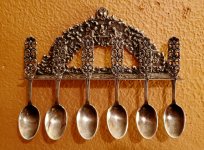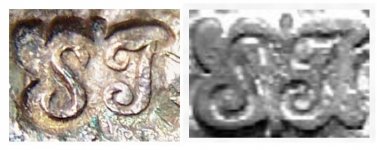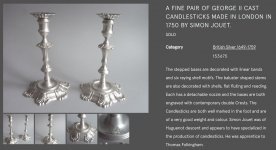tamrock
Gold Member
- Jan 16, 2013
- 15,447
- 31,341
- Detector(s) used
- Bounty Hunter Tracker IV
- Primary Interest:
- All Treasure Hunting
I went to this thrift store yesterday, because it was senior discount Tuesday. Found nothing. Then today as I was waiting at a stoplight at the intersection of were this trift store is at, I said to myself naa, I ain't gonna go in there, cuz yesterday they had nothing. As I was coming to the entrance to the parking lot a car slowed way down to turn into the thrift store and I was saying to myself c'mon lady, get in there as there was traffic in the other lane and I couldn't whip around her and then I said awe what the heck and followed the slow poke in, as I thought I might get lucky because they put new goods out. The first thing that looked silver was this Scandinavian 83% silver spoon set and I thought lucky me and then thought well I better slow down and look high and low and found some weighted sterling. All and all for $24.94 with tax. I really like the spoons and the hanger is also hallmarked the same as the spoon. The others stuff I'll add to the smash stash.
There I weighed them and all together 112 grams. Now they're on the wall. It amazes me this set stayed all together for me to find all taped up in a thrift store.
There I weighed them and all together 112 grams. Now they're on the wall. It amazes me this set stayed all together for me to find all taped up in a thrift store.
Amazon Forum Fav 👍
Attachments
Last edited:















 He appraised the pair at maybe $900. to as high as $1000. and that's been maybe 5 years ago. Its so nice now to identify the maker, as I was coming up with a possible other silversmith who's mark looked somewhat similar, but I was unconvinced because it wasn't spot on as the one you've provided. Thanks again.
He appraised the pair at maybe $900. to as high as $1000. and that's been maybe 5 years ago. Its so nice now to identify the maker, as I was coming up with a possible other silversmith who's mark looked somewhat similar, but I was unconvinced because it wasn't spot on as the one you've provided. Thanks again.


